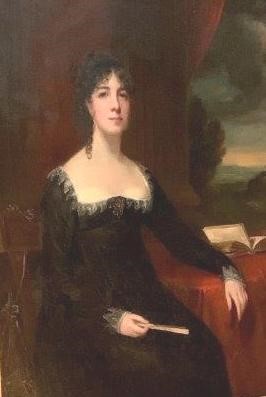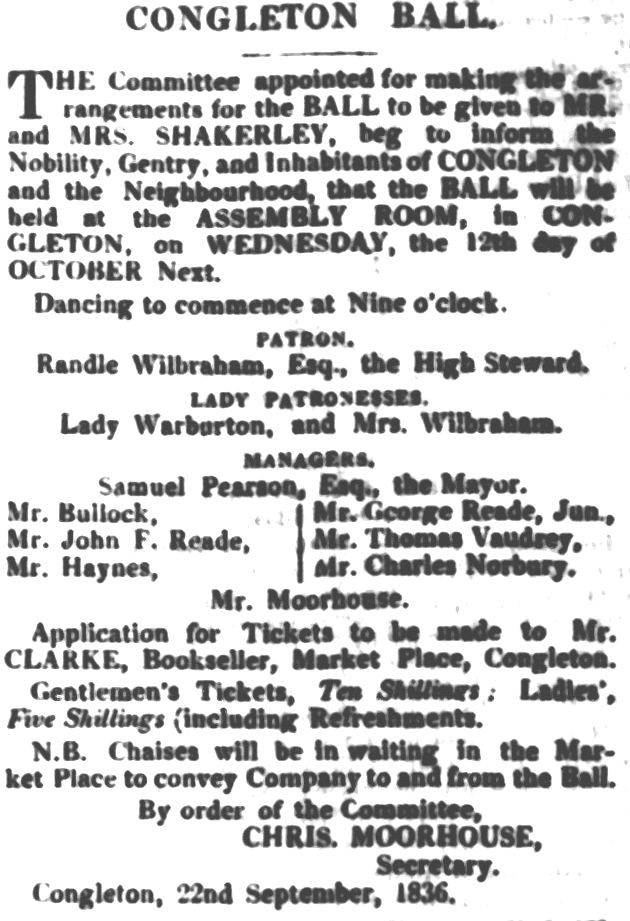Lady Alice Warburton: The Woman Behind the Ghost of Congleton’s Haunted Walk

Lady Alice Warburton: The Woman Behind the Ghost of Congleton’s Haunted Walk
Nestled in the heart of Cheshire, the story of Lady Alice Warburton, born in 1762, has captivated generations of locals in Congleton. Though she lived a life marked by privilege, adventure, and legacy, it is her spectral presence that continues to intrigue residents. Many claim to have seen her ghost along what is now known as Lady Warburton Walk, a footpath forever linked to her memory. But who was Lady Alice Warburton, and how did she become part of Congleton’s folklore? This is her real story.
A Noble Beginning
Lady Alice was born into the affluent Parker family on February 21, 1762, in Chelford, Cheshire. Her parents, Reverend John Parker and Jane Gartside, both hailed from Manchester and married in 1759 at the historic church of St Mary’s (now Manchester Cathedral). Alice was the second of six children, growing up in a family where nobility and wealth were intertwined. Their family estate, Astle Hall, once stood as a symbol of their prominence, though it has since been demolished.
Like many women of her status, Alice’s marriage was to cement her place in the local gentry. On August 14, 1781, she married Sir Peter Warburton, 5th Baronet of Arley, at the quaint St John the Baptist Church, also known as Jenkins Chapel, in Saltersford cum Kettlehulme. Despite an eight-year age gap, their marriage was a fitting union of two noble houses. Together, they embraced the lifestyle of the aristocracy—attending hunts, horse races, and social events.
However, the marriage produced no children, and when Sir Peter passed away in 1813 at the age of 59, Lady Alice was left a wealthy widow. Peter’s estate, Arley Hall, was inherited by his great-nephew, Rowland Eyles Egerton Warburton, marking the end of the Warburton Baronetcy.
Life as a Widow: Lower Daisy Bank and Beyond
With her husband gone, Alice inherited a fortune that allowed her to establish her own household. Among her assets was Lower Daisy Bank House in Hulme Walfield, Congleton. This picturesque home became her residence for much of her widowhood. Despite the quiet rural setting, Alice was anything but isolated. She was often seen at balls and social gatherings, including the Congleton Ball in 1836, where her name frequently appeared in society columns.
Lower Daisy Bank was a modest yet charming estate, and the footpath that connected her home to Giantswood Lane is still known today as Lady Warburton’s Walk.

The Grand Tour: A Lady of Adventure
At the age of 56, Alice embarked on an extraordinary journey—a Grand Tour of Europe that would span nearly a year. In February 1818, accompanied by her trusted steward James Dale, along with Mr. and Miss Dixon, and three servants, she set off from Hulme Walfield on what would become a remarkable adventure.
James Dale, who had previously served as a footman at Arley Hall, kept a detailed diary of their travels. They crossed the Channel from Dover to Calais and journeyed through France, Italy, Switzerland, and Germany, encountering all the trials of 19th-century travel. From braving snowstorms in the mountains to staying in inns plagued by bugs and fleas, their journey was an odyssey that tested their endurance.
In Rome, they arrived just in time for the Easter Festival, and in Naples, they travelled roads infamous for being plagued by robbers. After months of travel, they returned to England in December 1818, having traversed over 1,800 miles. Dale’s vivid accounts of Alpine landscapes, bustling cities, and the sheer number of English tourists they encountered give us a window into an era where travel was a luxury few could afford, and even fewer would undertake.
The True End of Lady Warburton
Despite her adventurous life, Lady Alice Warburton did not meet the grisly end that local ghost stories suggest. There are tales of her falling to her death at Lower Daisy Bank and even being decapitated in some versions of the legend. However, these are myths. In reality, Lady Alice died peacefully at her residence on Albemarle Street, London, on September 9, 1837, at the age of 75. She was buried alongside her husband at Great Budworth. Her gravestone, still visible today, provides a tangible reminder of her legacy.

Lady Warburton’s Legacy and the Ghostly Walk
Though Lady Alice lived a long and fulfilling life, it is her ghost that continues to haunt the imaginations of those in Congleton. During World War II, many locals claimed to have seen her spectral figure gliding through the mists of Dane Valley or moving through the windows of the now-demolished Daisy Bank House. The walk that once connected her estate to the surrounding area, Lady Warburton’s Walk, is now a public footpath, but its eerie atmosphere persists.
Today, the only remnants of her former home are a hatchment—a diamond-shaped wooden panel displaying her coat of arms—hanging in St Peter’s Church, Congleton. It once adorned the doorway of Lower Daisy Bank, serving as a silent witness to her life and death.
A Ghost or a Remarkable Woman?
While the tales of her ghost walking along Lady Warburton Walk make for exciting local lore, the true story of Lady Alice Warburton is far more fascinating. From her privileged beginnings to her adventurous travels and generous inheritance, Alice Warburton lived a life that most can only dream of. Her story endures not just because of ghostly sightings, but because she was a woman of strength, intelligence, and independence—qualities that continue to inspire.
So, the next time you walk down Lady Warburton’s Walk, perhaps you’ll think less of the ghostly mist and more of the remarkable woman who once called Congleton her home.
Research for this article was undertaken by the Family History Society, and in particular, Sue and Helen, who travelled to various places and meticulously looked through archives to find out about as much as possible about Lady Alice, and Marie, who translated the historical documents – for us. We thank them for their contribution. More information on Lady Alice and their research, can be found at Congleton Museum.